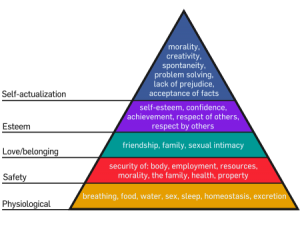Is it time to legalize illicit drugs?
Listening to NPR can elicit some sobering thoughts sometimes. It’s becoming more and more obvious that the United States really needs to become more practical about a lot of issues, and less emotional. One of the biggest issues that affects our country much more then most people realize is illicit drug use.
According to the White House.Gov budget web pagethe Drug Enforcement Agency’s budget was $1,761,000,000 in 2007. The page gives estimates $1,937,000,000 for 2009. There are several other agencies who overlap into the drug trade on that page too. Add in the FBI, Marshals service, Organized Crime and Drug Enforcement Task Force, BATF, and Attorney’s and we’re talking about another $1,196,400,000. If we use an extremely conservative 10% of their actual budget is directly related to drug enforcement, that still comes out to $119,640,000
Now, according to Criminal Offenders Statistics half of all prisoners are serving for violent or drug related crimes. Again, being conservative lets say half of those are drug related crimes. Going back to the Federal Budget, $5,534,000,000 is for the Federal Prison System. A quarter of that is $1,383,500,000.
So on the Federal level we have an extremely conservative number of $5,081,500,000. This is the direct MINIMUM cost of the Drug War to taxpayers in 2009.
Now, according to White House Drug Policy report, US Citizens spent $63,700,000 on illicit drugs of all types in 2000. Other sources state that drug use has stayed steady since 1993, so we can assume this number is still pretty close. So at a Federal level, not including individual states, we’re spending over five billion dollars to stop sixty million dollars of trade.
In Mexico, over 10,000 people have died in the drug war violence in the past few years. There are no hard numbers for drug related deaths in the United States, but no doubt a huge number of those violent crime statistics I mentioned above are drug related.
In 2003, Alcohol and Tabacco Sales were $115,900,000,000. Without any other hard data, lets assume that sales are the same in 2009, although they’ve most likely increased since then. With an average (low-balled) tax of 5%, all the states are making a combined $5,795,000,000 from the sale Alcohol and Tabacco products. Yes, these may not be the same as the hard drugs, but they all come into the same class of Luxury products in their recreational use.
After Prohibition ended, the cost of illegal alcohol decreased to ten percent of it’s Prohibition-era costs. Let’s assume the same would happen if the current crop of illegal drugs were legalize and we find that the drug trade would decrease to $6,370,000 over the entire United States. At the same 5% tax increase we’d see a mere $318,000 in tax revenue.
To break it down:
Cost of “Drug War”: $5,795,000,000 (Federal Level Only)
Tax revenue generated off legalized drugs: $318,000
Cost of education at Federal Level in 2009: $45,400,000,000
Cost of Iraq War, 2009: $136,000,000,000
Now, I didn’t add in costs of rehabilitation from drug use which is already factored into our current health costs. Nor did I also factor in the cost of putting in a legal distribution system (free to tax payers), tax enforcement system (minimal and covered by IRS as part of regular duties,) any age limit enforcement laws that would need to be taken care of before drugs were legalized, and of course drug tests for employment. There is also the current cost of cleaning up illegal drug production sites, especially in National Forests. Such costs would be rolled up into the production and manufacture and thus taken away from the Taxpayer.
It’s interesting to note that after Prohibition, the consumption of alcohol went DOWN by 30%. While there is no reason to believe drug consumption would decrease also, it’s hard to imagine it would increase by more then ten or fifteen precent.
I have also not mentioned any monies that would be generated by commercial hemp production as product demand would likely remain fairly low. Although Hemp seems to be one of the best plants to convert into biofuels, so those revenues could potentially increase dramatically.
The last thing we have to factor in is the affect legalized drug would have on other countries. To take Mexico for an example as their citizens are responsible for a huge percentage of illegal drug production, in addition to their own savings in having to decrease drug enforcement program, there would be more money flowing into their overall economy. Small scale farmers could afford to cultivate currently illegal products and raise their own economic level to name just one example.
Economically I think we really only have one choice. The moral arguments against currently illegal drugs is the exact same as it was against alcohol during Prohibition and will probably never be solved. But having just under six billion more dollars, a decreased prison population, less pollution, and most of all, less violence seems to counter just about any moral argument one can make.

